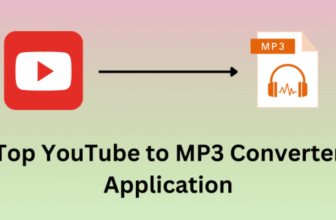Why Digital Distribution is Essential – Upload Your Track on All Digital Stores and Earn Money

The music industry has evolved dramatically in the last two decades. Gone are the days when artists had to rely on physical album sales or radio play to gain recognition and make a living. Today, digital distribution is the backbone of the modern music business. If you want to succeed as an artist, you must upload your track on all digital stores and earn money through various revenue streams.
With millions of listeners relying on platforms like Spotify, Apple Music, and Amazon Music for their daily playlists, not having your music available digitally means missing out on exposure and earnings. Digital stores provide independent musicians with a global reach, allowing them to compete with mainstream artists without needing a record label. Understanding the importance of digital distribution and leveraging it effectively is key to making a sustainable income from your music.
The Rise of Digital Music: Why It Matters for Artists
Music consumption has shifted drastically from CDs and downloads to streaming services. Platforms such as Spotify, YouTube Music, and Tidal have transformed how listeners access and engage with music. The streaming model allows fans to listen to unlimited songs for a monthly subscription or for free with ads. This shift benefits artists in several ways:
- Increased Accessibility – Listeners from all over the world can discover your music at any time.
- Consistent Revenue Streams – Instead of one-time album sales, artists earn royalties every time their song is played.
- Better Data and Insights – Platforms provide analytics on streams, listener demographics, and locations, helping artists refine their marketing strategies.
Digital distribution has leveled the playing field, allowing independent artists to build careers without needing major label deals.
How Digital Distribution Works
Before uploading your track on all digital stores and earning money, it’s important to understand how distribution works. You cannot directly upload your music to platforms like Spotify or Apple Music; you need a digital music distributor. These companies act as middlemen, ensuring that your tracks are delivered to all major streaming and download platforms.
Here’s how digital distribution works:
- Choose a Distributor – Select a platform like DistroKid, TuneCore, or CD Baby to handle your releases.
- Upload Your Music – Submit your audio files, cover art, and metadata (song title, artist name, genre, etc.).
- Select Release Date – Decide whether to release your track immediately or schedule it for a future date.
- Streaming Platforms Receive Your Track – Your song gets distributed to Spotify, Apple Music, Deezer, and more.
- Fans Stream and Purchase – Listeners discover, stream, or buy your music.
- You Earn Royalties – Platforms pay you based on the number of streams, downloads, and licensing opportunities.
Understanding this process ensures a smoother distribution experience and maximizes your earnings.
Benefits of Uploading Your Track on All Digital Stores
1. Global Reach and Exposure
Uploading your track on all digital stores ensures that people from all over the world can access your music. Unlike physical sales, where distribution is limited by location, digital platforms allow fans from different countries to discover and stream your tracks instantly. This increases your chances of gaining a worldwide audience.
2. Monetization Through Streaming Royalties
Every time someone plays your song on Spotify, Apple Music, or Amazon Music, you earn royalties. While each stream might pay only a fraction of a cent, the revenue adds up over time, especially if your track gains popularity or is included in playlists with high engagement.
3. Opportunities for Playlist Placements
Popular playlists on streaming platforms have millions of followers. Getting featured in a well-curated playlist can boost your streams exponentially. Many independent artists have gained fame by having their songs picked up by playlists like Spotify’s “Fresh Finds” or Apple Music’s “New Music Daily.”
4. Enhanced Artist Branding and Credibility
Having your music available on major digital stores adds credibility to your brand. It signals to fans, event organizers, and industry professionals that you take your music career seriously. A presence on streaming platforms makes it easier to market yourself as an artist.
5. Data and Analytics for Strategic Growth
Platforms like Spotify for Artists and Apple Music for Artists provide detailed insights into your audience. You can see which countries stream your music the most, which songs perform best, and what demographic listens to your music. This data helps in making informed decisions about promotions, touring, and fan engagement.
Choosing the Right Digital Distributor
Not all digital distributors are the same. Some charge upfront fees, while others take a percentage of your royalties. Here are some of the top options for independent artists:
- DistroKid – A budget-friendly option with unlimited uploads for an annual fee.
- TuneCore – Allows artists to keep 100% of their royalties but charges per release.
- CD Baby – Offers one-time fees for lifetime distribution and additional services like sync licensing.
- Amuse – A free distribution service with an option for label deals.
- UnitedMasters – Focuses on independent artists with opportunities for brand partnerships.
Choosing the right distributor depends on your budget, release strategy, and long-term goals.
How to Maximize Earnings After Uploading Your Track
Uploading your track is just the first step. To maximize your earnings, you need a promotional strategy. Here are some effective ways to increase your revenue:
1. Promote Your Music on Social Media
Use Instagram, TikTok, and Twitter to share snippets, music videos, and behind-the-scenes content. Engaging with fans and encouraging them to stream your music can significantly boost your numbers.
2. Submit Your Music to Playlists
Platforms like Spotify allow artists to submit unreleased tracks for editorial playlist consideration. Additionally, reaching out to independent playlist curators can help increase your visibility.
3. Leverage YouTube Content ID
If your music is used in YouTube videos, you can monetize it through YouTube’s Content ID system. Many digital distributors offer this service as part of their packages.
4. Sell Merchandise Alongside Your Music
Artists often increase their income by selling branded merchandise such as t-shirts, hoodies, and posters. Promoting these products alongside your music can create additional revenue streams.
5. Perform Live and Use Streaming Platforms to Boost Attendance
Whether through virtual concerts or live events, performing your music in front of an audience increases engagement. Promote your streaming links at shows to encourage new listeners.
Conclusion
In today’s digital world, uploading your track on all digital stores and earning money is not just an option—it’s a necessity. Digital distribution has revolutionized the music industry, giving independent artists access to global audiences, consistent revenue streams, and career-building tools that were once exclusive to major record labels.
By leveraging digital stores effectively, you can reach more fans, earn royalties, and establish yourself as a professional musician. Success in the streaming era requires not only great music but also smart marketing and strategic planning. If you haven’t yet taken advantage of digital distribution, now is the time to start.
Are you ready to take control of your music career? Start distributing your tracks today and unlock the potential of digital streaming!
Related Articles:
For further reading, explore these related articles:
- How to Upload Your Track on All Digital Stores as an Independent Artist
- How to Upload Your Track on All Digital Stores Without a Label
For additional resources on music marketing and distribution, visit DMT Records Private Limited.







